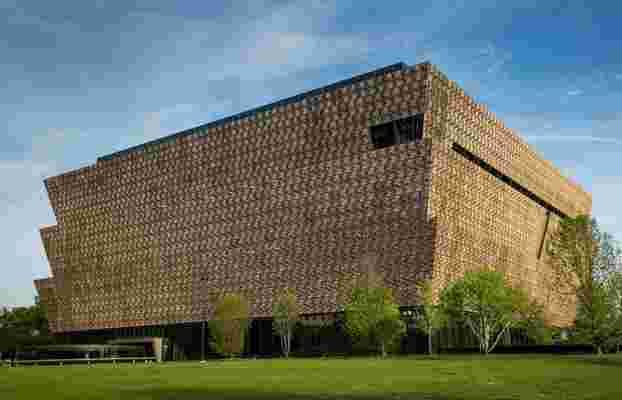These Black Architects Have Shaped the World Around Us
Although black architects are few in number, their impact on the world around us has been significant. Phil Freelon, managing and design director of Perkins+Will's North Carolina practice, decided long ago that he would focus on ushering new and diverse talent into his field. He founded the Phil Freelon Fellowship , a program that provides financial aid to black students to attend Harvard University's Graduate School of Design. "The overall goal is to improve the profession by bringing in different voices and different visions. Without more blacks and other people of color, we all lose an opportunity for a more expansive viewpoint and a richer environment for creativity," says Freelon. "And that begins with a more diverse workforce." Freelon's unique vision was heralded last fall when the National Museum of African American History and Culture, which he designed in partnership with British-Ghanaian architect David Adjaye, opened on the National Mall. Below are four black architects who have played a massive role in defining our architectural landscape here in America and around the world.

Opened in 2016, the National Museum of African American History and Culture in Washington, D.C., was designed by Adjaye Associates and Phil Freelon.
David Adjaye
Born in 1966, David Adjaye is a British-Ghanaian architect considered by many to be among the best in the world today. His work tends to feature historical motifs that culminate in decorative patterns. In 2016, Adjaye, who is the principle of the London-based firm Adjaye Associates, completed the National Museum of African American History and Culture in Washington, D.C., in partnership with Phil Freelon. The grand opening included President Barack Obama and First Lady Michelle Obama .
Diébédo Francis Kéré
Diébédo Francis Kéré is an award-winning, Berlin-based architect who is the principal and founder of Kéré Architecture. The architect's life story is as powerful as his work. As the first son of the head of his village, Kéré was the only child allowed to attend school. He eventually ended up in Germany, where he earned a diploma in architecture and engineering. The young architect, however, never forgot his origins, setting his focus on his home community in Burkina Faso. Kéré has created several innovative projects in his native land by combining traditional Burkinabé techniques and materials with modern engineering methods. He was awarded an Aga Khan Award for Architecture for a primary school he designed in Gando, Burkina Faso.
Phil Freelon
Not only is Phil Freelon an internationally recognized architect and founder of the North Carolina–based Freelon Group, but he's using his expertise and influence to help aspiring black architects make a name for themselves. In late 2016, Freelon and global architecture and design firm Perkins+Will founded the Philip Freelon Fellowship, a program that supports African Americans and other students of color in their pursuit of advanced degrees at the Harvard Graduate School of Design. Among the many spectacular buildings the Philadelphia native has under his belt, the Museum of African American History and Culture in Washington, D.C., and the Harvey B. Gantt Center for African-American Arts + Culture in Charlotte, North Carolina, showcase his talent for smart, daring design.
Paul Williams
Born in Los Angeles in 1894, Paul Williams lost both parents by the age of four. Despite adversity, he excelled in school and eventually followed his dream to become an architect, opening his own firm in his hometown and becoming the first African-American member of the American Institute of Architects in 1923. The real-estate boom was in full force in Southern California during this era, and Williams made a name for himself by designing a mix of small, affordable houses, as well as larger, more opulent homes throughout the city. By the time of his death in 1980, he had built private residences for the likes of Lucille Ball and Frank Sinatra, among others. Yet it wasn't just in residential architecture that Williams gained prominence. He designed some of L.A.'s most iconic structures, including the Theme Building (1961). The $2.2 million landmark, which looks more like a spaceship than a building, was constructed next to Los Angeles International Airport. A year after it was completed, the animated show The Jetsons premiered. The Theme Building is now considered as symbolic in the L.A. cityscape as the Hollywood sign.